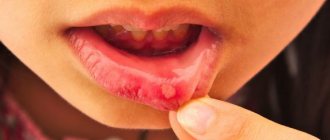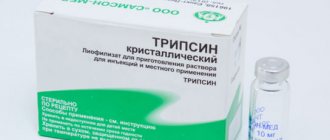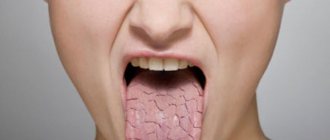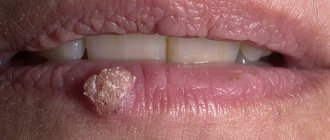Gastritis is one of the most common diseases among all pathologies of the digestive system. This disease is observed in 80-90% of the population. Its main danger is the transition to peptic ulcer disease and the possibility of malignancy.
Gastritis is a specific disease of inflammatory-dystrophic origin of the stomach, in which structural changes occur in its mucous membrane, leading to dystrophy, atrophy or dysregeneration. In the process of these changes, the secretion functions of digestive enzymes (hydrochloric acid and pepsin), synthesis and motility processes of gastrointestinal hormones are disrupted.
Epidemiology
According to statistics, gastritis is registered in 80-90% of adults. Helicobacter pylori associated is recognized as the most common; it accounts for 90% of all diagnoses of chronic hepatitis. The most dangerous form with a high percentage of malignancy is atrophic, occurring in 5% of cases in people under 30 years of age, in 35% in patients 30-50 years of age, in 70% in patients over 50 years of age.
In children, the disease most often develops during puberty and at the age of 4-7 years, when the child is most susceptible to infectious and viral diseases.
Salivary glands – increased salivation and dry mouth
There are a number of tips to help keep
your salivary glands healthy:
First, you need to drink plenty of water. Secondly, you should use chewing gum that does not contain sugar. And thirdly, it is necessary to suck on lollipops, which also do not contain sugar.
In certain cases, your dentist may recommend gargling with artificial saliva. The above drug is sold in spray or liquid form. You do not need a prescription to purchase it, but use it several times a day. However, artificial saliva does not contain proteins, minerals and other necessary elements that are contained in natural salivary fluid. Thus, the above drug will simply be useless for digestion.
Etiology
The development of gastritis is caused by the influence of many factors on gastric tissue. Among the reasons, exogenous and endogenous factors are distinguished.
Exogenous factors include:
- eating disorders;
- bacterial colonization by Helicobacter pylori, less commonly by other bacteria or fungi;
- radiation exposure, chemical damage;
- long-term use of medications that irritate the mucous membrane (the most aggressive are glucocorticosteroids, anti-inflammatory drugs, acetylsalicylic acid, etc.);
- parasitic infestations;
- bad habits (especially alcohol and smoking);
- chronic stress.
Among the endogenous factors are:
- genetic predisposition;
- autoimmune processes;
- duodenogastric reflux;
- metabolic disorders;
- endogenous intoxications;
- endocrine dysfunctions;
- hypoxemia;
- avitaminosis;
- chronic infectious diseases;
Also, the development of gastritis is promoted by various reflex effects from other affected organs.
Excess saliva, or how to prevent it
By and large, there are three types of therapy that are used to treat increased salivation. These include Botox injections, surgical treatment and medications that are available only by prescription. It all depends on the factors that caused the disease. It is clear that the simplest thing will be to prescribe certain medications. Typically, the above drugs will include scopolamine and glycopyrrolate. Side effects include increased heart rate, trouble urinating, drowsiness, and blurred vision.
For severe forms of drooling, specialists resort to Botox injections into the salivary glands (one or more). The treatment is considered safe, but its effect only lasts for several months. And only in very severe cases do doctors resort to surgery. During surgery, the salivary glands are removed or the direction of the excretory ducts is changed.
With the help of surgery, you can permanently get rid of increased salivation. Salivary glands – increased salivation and dry mouth
Pathogenesis
The mechanism of pathogenesis is based on characteristic inflammation of the mucous membrane, which leads to its structural restructuring. If predisposing factors and the active influence of causes are present, the process of inflammation begins, which is characterized by a long course.
Chronitization is based on round cell inflammatory infiltration by neutrophils and other cells of the autoimmune system of the mucosa. Under the influence of the inflammatory reaction, the links in the restructuring of the shell structure and the development of active dysregenerative processes in it are triggered with a further transition to dystrophy and atrophy. The result of these processes is a quantitative change in hydrochloric acid.
The leading role is occupied by associated Helicobacter pylori, the second most common is drug-induced gastritis, and then atrophic.
Symptoms of the disease
Clinical symptoms can be divided into pain, dyspeptic disorders, and general symptoms of malaise.
Pain syndrome
Quite often it is the leading link in the clinical picture of the disease, since it is with this that patients seek help.
As a rule, pain is localized in the epigastrium, in other parts of the abdomen much less often. With gastritis with high acidity, a typical pain syndrome develops 1-2 hours after eating, the pain is acute and cutting in nature.
Dyspeptic manifestations
This syndrome is characterized by a violation of the digestion process, which is manifested by the following symptoms:
- decreased appetite;
- discomfort after eating;
- heartburn (may worsen when changing position);
- nausea;
- belching, flatulence;
- gagging - sometimes vomiting;
- sour or metallic taste.
With gastritis with high acidity, the symptoms are most often mildly expressed and become more active in combination with provoking factors (significant pauses between meals, severe stress, overeating, violation of the temperature regime of food, etc.).
General symptoms of illness
As a rule, with uncomplicated forms of pathology, the general condition changes to an insignificant extent. As the inflammatory process increases, changes can be quite pronounced. The most commonly observed symptoms are:
- severe general weakness;
- hypotension, dizziness;
- irritability;
- increased sweating;
- intolerance to certain foods;
- reduction in body weight by more than 5% of total weight within six months;
- hypovitaminosis.
Patients with Helicobacter pylori with hyperacidity may develop ulcer-like symptoms, which indicate a probable pre-ulcerative condition.
In general, the clinical picture is determined by the specificity of gastric secretion disorders and the degree of motor-evacuation dysfunction. The initial period is characterized by symptom-free symptoms, then, as the inflammatory process progresses, a pain syndrome develops with the addition of dyspepsia.
Acute gastritis - symptoms and treatment
Diagnosis begins with interviewing and examining the patient. During the conversation, the gastroenterologist clarifies what the patient ate before the signs of acute gastritis appeared, what medications he is taking, and whether he has any concomitant diseases (neuralgia, gallbladder, liver or heart disease). Objectively, attention is drawn to pale and dry skin, coating on the tongue, rashes in the area of the nasolabial triangle, bitterness and bad breath. On palpation (palpation), pain occurs in the epigastrium with irradiation to the left or right hypochondrium.
To confirm the diagnosis, various laboratory and instrumental research methods are used.
Important laboratory tests include:
- clinical blood test;
- 13C-urease breath test for antigen to Helicobacter pylori;
- biochemical blood test - allows you to identify disturbances in the functioning of the pancreas, liver, gallbladder and its ducts.
most commonly used instrumental diagnostic methods are
- radiography with a contrast agent - allows you to examine the relief of the gastric mucosa and the degree of tension of its walls;
- Ultrasound of the stomach - makes it possible to study the affected areas during a detailed examination, but does not allow collecting material for a detailed laboratory study.
FGDS deserves special attention - insertion of a thin endoscope into the stomach through the esophagus. This procedure is the optimal diagnostic method for gastric diseases [12]. It is prescribed regardless of the patient’s age. It allows you to determine the areas and extent of damage to the mucosa, assess the risk of internal bleeding and timely detect a malignant neoplasm.
The advantage of FGDS is the ability to perform a biopsy - to pinch off a small piece of tissue from different parts of the stomach. This procedure is painless and cannot cause bleeding.
The rules for preparing for FGDS are quite simple:
- a few days before the procedure, you need to give up some medications or coordinate their use with your doctor;
- 12 hours before the examination, refuse to eat (if the procedure is scheduled for the morning, then the last meal can be at 18:00, but not later).
Often patients are emotionally frightened due to the upcoming FGDS. The procedure is unpleasant, but tolerable and practically painless. As a rule, 15 minutes are allotted for it, but in the absence of pathologies, the process takes no more than 2-5 minutes.
FGDS can take place under:
- general anesthesia;
- light sedation (pain relief);
- local anesthesia.
Most often, doctors use local anesthesia - irrigation of the mucous membrane of the pharynx and the root of the tongue with a special anesthetic drug. This is a reliable method, proven over the years, which does not cause any complications and is easily tolerated by patients of any age. It allows you to reduce the gag reflex and calm the patient, without causing complications. Within 10-15 minutes the patient feels the same as before.
Anesthesia (medicated sleep) is carried out in the absence of contraindications, is easily tolerated, makes it possible to avoid negative emotions from the procedure, and also allows the endoscopist to work calmly and efficiently. Medication-induced sleep is performed in many countries around the world on a regular basis during a standard endoscopic procedure (sleep endoscopy). Local anesthesia is often an exception to the rule and is performed in the presence of contraindications to intravenous sedation, of which there are very few.
Complications after FGDS are rare. These include: dry or sore mouth, headache due to the patient’s severe nervousness. When the walls of the stomach are straightened during the procedure, belching of air may occur.
to become infected during FGDS if the equipment is processed and sterilized not manually, but in automatic installations for washing endoscopes.
Classification, stages of the disease
In clinical practice in Russia, the working classification based on the developments of S. M. Ryss and the Sydney classification is most often used.
Working classification
According to etiology and pathogenesis:
- Type A
: characterized by autoimmune fundic atrophic processes, including those associated with Addison-Bearman anemia;
- Type B
: specific bacterial antral non-atrophic process associated with Hp;
- Type C
: a chemical form associated with reflux of lysolecithin, duodenogastric reflux, and also due to the use of medications;
- Type AB
: characteristic combined atrophic pangastritis, characterized by the involvement of all parts of the stomach in the process.
In addition, there are alcoholic, drug, radiation, lymphocytic, granulomatous eosinophilic and other forms of the disease.
According to topographer-morphological features
By localization:
- fundal;
- astral;
- pangastritis.
According to morphological criteria:
- surface form;
- interstitial;
- atrophic (mild, moderate or severe);
- with complete or partial intestinal metaplasia (small or large intestine).
According to specific morphological characteristics
According to the severity of inflammation:
- minimum;
- insignificant level;
- moderate;
- expressed.
By degree of activity:
- not active;
- mild;
- average;
- heavy.
According to the severity of coolant contamination:
- not expressed;
- lungs;
- average;
- tall.
According to the features of the clinic:
- with a predominance of pain (type B);
- with a predominance of dyspeptic disorders (type A);
- latent (asymptomatic).
According to functional criteria:
- with preserved secretion;
- with increased;
- with secretory insufficiency.
According to endoscopic criteria:
- erythematous (exudative);
- with flat (sharp) erosions;
- rising erosions (chronic);
- hemorrhagic;
- complicated by reflux gastritis;
- hyperplastic.
Separately, gastritis of unknown origin is distinguished, as well as of mixed origin.
The course of chronic hepatitis is characterized by two stages: relapse (exacerbation) and remission, gradually replacing each other.
specialist
Our doctors will answer any questions you may have
Tumasova Anna Valerievna Gastroenterologist
Stages of the disease
The disease occurs in 4 main stages:
- Hyperemic.
At the initial stage, the mucous membrane acquires a reddish color, and slight swelling appears.
- Hypertrophic.
At this stage, thickening of the mucosa occurs with a parallel decrease in hydrochloric acid. Changes are likely both in tissues and at the cellular level (dysplasia), as well as the accumulation of leukocytes (metaplasia).
- Atrophic.
As a result of a long-term ongoing process of inflammation, the mucous membrane becomes thinner, regenerative capacity decreases, and epithelial cells die off and are subsequently replaced by scar tissue.
- Erosive and/or ulcerative.
Due to thinning of the mucous membrane, focal lesions of varying depths form on the inner surface of the stomach.
With each subsequent exacerbation, these lesions deepen and grow, and the symptoms increase accordingly.
Excess saliva in the mouth
By and large, a large amount of saliva is not a problem if the condition is not systemic. Typically, the amount of saliva you produce depends on what you drink or eat. In a healthy person, the body easily eliminates excess salivation. In general, excessive salivation is caused by overactivity of the salivary glands, as well as if a person has a disturbed swallowing process.
If you eat a spicy dish during your lunch break, your body will begin to intensively secrete saliva. This is because the taste buds on the tongue help increase the volume of fluid produced. For a visual example, you can put something sharp on your tongue. After a few moments, you will be able to feel a rush of saliva into your mouth. Also, sour foods affect excessive salivation. Accordingly, you can reconsider your diet if you are concerned about excess salivary secretion. In addition, the above symptom may occur as a result of certain diseases and abnormalities, as well as due to the use of special medications.
Possible complications
If the doctor’s recommendations are not followed or therapy is inadequate, gastritis can be complicated by the following pathological conditions:
- digestive disorders in the form of malabsorption and dyspepsia;
- vitamin B deficiency;
- peptic ulcer: most often develops with the erosive form of gastritis;
- gastric bleeding: occurs with ulcers and erosions. Clinical signs will include pallor, weakness, cold and sticky sweat, shortness of breath, tachycardia, the presence of blood in the vomit, black stools. This condition requires immediate hospitalization;
- atrophic gastritis: the glands of the mucous membrane almost completely stop producing secretions, the process of replacement with scar tissue begins, it refers to a prenatal condition, the likelihood of malignancy is extremely high;
- iron deficiency anemia (develops with low production of Castle factor);
- stomach cancer.
During an exacerbation, severe complications can develop within several days, and sometimes even one day.
Gastritis or functional dyspepsia?
The term “gastritis” is usually used to refer to various inflammatory and degenerative changes in the gastric mucosa. But in fact, the disease itself is quite rare and can only be diagnosed using a biopsy during a gastroscopy procedure.
Often what is called gastritis is functional dyspepsia (a set of disorders of the digestive system). The term “gastritis” is also mistakenly used to mean gastroesophageal reflux disease (GERD) or irritable bowel syndrome (IBS).
Currently, the diagnosis of “gastritis” is usually made in the presence of morphological signs discovered after undergoing a series of medical examinations, in particular, after laboratory identification of the main causative agent of the disease - the bacterium Helicobacter pylori (H. Pilory), histological studies and FGDS.
Treatment
Basic treatment is based on the complete or maximum possible exclusion of “aggression” factors that negatively affect the gastric mucosa. Therapy during an exacerbation period begins with following a gentle diet according to Pevzner (table No. 1 and No. 2).
Diet for gastritis
In case of relapse of the disease, a gentle diet is used, and the preparation option is pureed. The basic principles of therapeutic nutrition include:
- mechanical sparing:
is carried out thanks to the choice of products according to the degree of coarse fiber content, digestion time in the stomach, as well as through the process of thorough culinary processing (steam cooking, stewing, giving food the consistency of puree);
- thermal sparing:
is ensured by the exclusion of excessively hot and cold foods that can injure the mucous membrane. The most optimal temperature for hot dishes should be in the range of +30-40 degrees;
- chemical sparing:
consists of increasing vegetable fats and animal proteins against the background of the physiological norm of vitamins, microelements, and all carbohydrates. This is due to the ability of fats to slow down gastric secretion, and on the part of proteins - inactivation of hydrochloric acid;
- limiting the amount of food taken at one time (the “often, but little” principle):
Meals should be 5-6 times a day, in small portions. The best option would be to match food intake with the process of activating the production of hydrochloric acid.
In addition, foods that have a medium and low level of stimulation of acid production are excluded from the diet: berries, fruits, meat, soft-boiled eggs, white bread crackers, cereals, sweet fruits and vegetables.
During a gentle diet, the range includes:
- pureed vegetable soups (excluding cabbage soup and borscht), milk and cereal or noodle soups;
- unleavened cottage cheese, low-fat and non-spicy varieties of cheese;
- boiled pureed vegetables: Brussels sprouts and cauliflower (white cabbage is prohibited), zucchini, carrots, beets, tomatoes;
- compotes with pureed dried fruits;
- dried wheat bread.
All dishes are cooked strictly by steaming, boiling until soft, grinding and serving warm.
During the period of remission, it is advisable to adhere to the principles of a healthy diet. It is important to exclude spices, spicy foods, smoked meats and marinades, and strong meat broths. You should limit pastry, tea, drinks with a high carbon dioxide content, and chewing gum. It is strictly forbidden to drink alcoholic beverages, coffee, and smoking is also prohibited.
Drug treatment
The use of medications is aimed at reducing the active production of hydrochloric acid, regenerating the mucosa and increasing the protective functions of the mucous-bicarbonate barrier. The main groups of drugs used include:
- proton pump inhibitors: the principle of action is based on reducing the formation of hydrochloric acid, they are not addictive (omeprazole, pantoprazole, esomeprazole, etc.);
- H2-histamine receptor blockers: drugs block the effect of histamine on the parietal and parietal cells, resulting in a decrease in the synthesis of pepsin and hydrochloric acid. There is also an increase in the formation of prostaglandins, which increases the protective properties of the mucosa and stimulates regenerative processes. With prolonged use, addiction occurs;
- cytoprotectors: bismuth preparations, sucralfate, misoprostol are prescribed;
- antibacterial therapy: used in a combination of 2-3 drugs, the goal is eradication of Helicobacter pylori (penicillins, niroimidazole derivatives, macrolides);
- prokinetics: prescribed to reduce the frequency of reflexes (itopride hydrochloride, cerucal, domperidone);
- antispasmodics: the mechanism of action is to relieve spasticity (mebeverine, no-spa, hyoscine butyl bromide);
- replacement therapy: prescribed for the atrophic form and achlorhydria (enzymes and gastric juice drugs).
Other groups of drugs are prescribed for the treatment of concomitant pathologies and complications.
Prognosis and prevention
The prognosis is usually favorable. Complications, especially bleeding and malignancy, pose a danger.
To prevent the occurrence and progression of gastritis, it is necessary:
- maintain an optimal diet;
- to refuse from bad habits;
- carry out regular sanitation of the oral cavity;
- promptly identify and treat other pathologies of the digestive system.
Patients with a severe course and atrophic form should be registered at the dispensary with annual endoscopic monitoring, and also undergo anti-relapse treatment in the fall and spring.






